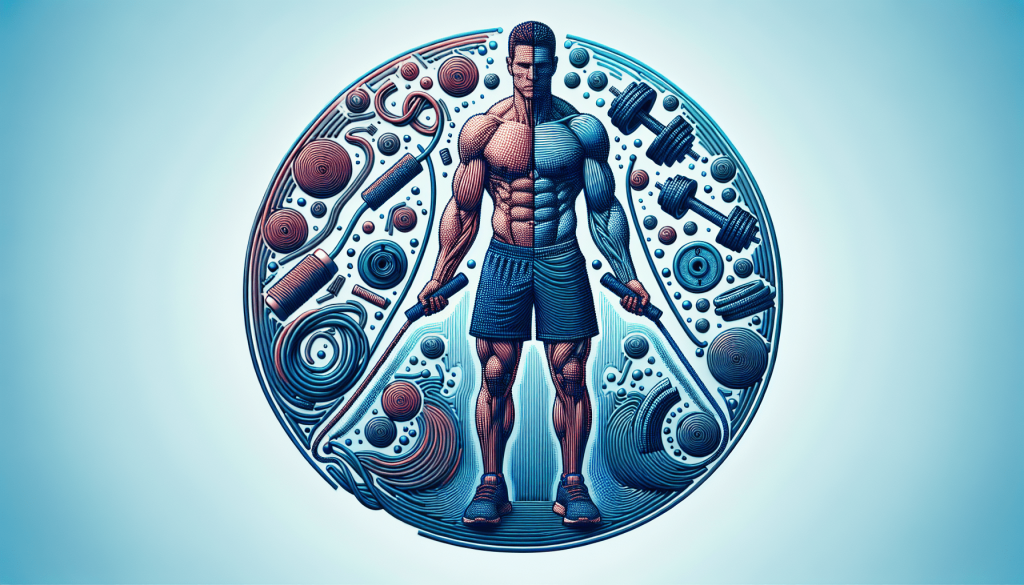Are you looking to achieve that coveted six-pack and wondering where to start? The perennial question of whether to focus on weight loss or muscle building first can be perplexing. Many people are eager to shed excess body fat, thinking it will reveal their abdominal muscles. Others believe that building a solid core is key to achieving a chiseled midsection. In this article, we will explore the common inquiries surrounding six-pack abs and address the dilemma of whether to prioritize weight loss or muscle building in your journey towards a defined physique. So, let’s embark on this fitness expedition together and uncover the secrets to sculpting those abs!

Factors to Consider
Current Body Composition
Before deciding whether to focus on weight loss or muscle building first, it’s important to consider your current body composition. If you have a higher percentage of body fat, it might be beneficial to prioritize weight loss initially. On the other hand, if you already have a relatively lean body and want to enhance your muscle definition, focusing on muscle building might be the right choice.
Overall Fitness Goals
Understanding your overall fitness goals is crucial when deciding where to start. If your primary goal is to achieve a six-pack or a more defined abdominal area, focusing on weight loss might be the way to go. However, if you want to increase strength, improve performance, or build overall muscle mass, prioritizing muscle building could be more appropriate.
Dietary Habits
Another factor to consider is your dietary habits. If you currently have a balanced and nutritious diet, it may be easier for you to focus on muscle building first. However, if your eating habits are not as healthy, prioritizing weight loss could help you establish a healthier relationship with food and set a solid foundation for muscle building later on.
Exercise Preferences
Considering your exercise preferences is essential for your long-term adherence and enjoyment of your fitness journey. If you enjoy cardiovascular exercises like running, cycling, or swimming, incorporating more cardio workouts into your routine during the weight loss phase may be more enjoyable for you. On the other hand, if you prefer strength training and lifting weights, focusing on muscle building might be more in line with your preferences.
Time Constraints
Time constraints are also an important factor when deciding whether to focus on weight loss or muscle building first. If you have a specific timeline or a special event coming up, such as a vacation or a wedding, focusing on weight loss might help you achieve visible results in a shorter period. However, if you have more flexibility with time, prioritizing muscle building could lead to long-lasting and sustainable progress.
Importance of Weight Loss
Reducing Body Fat Percentage
One of the primary reasons individuals aim to lose weight is to reduce their body fat percentage. Excess body fat not only affects the appearance but also increases the risk of various health issues such as heart disease, diabetes, and certain cancers. Prioritizing weight loss can help you lower your body fat percentage and improve overall health.
Enhancing Abdominal Definition
Weight loss can significantly impact the appearance of your abdominal muscles. As you shed excess body fat, your abdominal muscles become more visible, leading to enhanced definition and the coveted six-pack look. If your main goal is to achieve a visible set of abs, focusing on weight loss will help you reveal those muscles you’ve been working on.
Promoting Overall Health
Losing weight not only improves your physical appearance but also promotes overall health. By reducing excess body fat, you can lower the risk of developing chronic diseases, improve cardiovascular health, and increase your energy levels. Prioritizing weight loss can contribute to a healthier and more fulfilling lifestyle.
Creating Caloric Deficit
Weight loss is achieved by creating a caloric deficit, which means consuming fewer calories than your body needs for fuel. This forces your body to use stored fat as an energy source, leading to weight loss. By focusing on weight loss first, you can establish a caloric deficit and lay the foundation for sustainable fat loss.
Benefits of Muscle Building
Increasing Metabolic Rate
One of the key benefits of muscle building is its impact on your metabolic rate. Muscle tissue is more metabolically active than fat tissue, meaning it burns more calories at rest. By increasing your muscle mass, you can raise your basal metabolic rate, making it easier to maintain a healthy body weight in the long run.
Building Lean Muscle Mass
Muscle building allows you to build lean muscle mass, which not only improves your physique but also enhances your strength and functional capabilities. With increased muscle mass, you’ll have a higher strength-to-weight ratio and be better equipped to perform daily tasks and physical activities.
Enhancing Strength and Performance
If you prioritize muscle building, you’ll experience a significant increase in strength and performance. Stronger muscles enable you to lift heavier weights, perform more repetitions, and improve your overall athletic performance. Whether you’re interested in excelling in a particular sport or simply want to feel stronger and more capable, focusing on muscle building can help you accomplish these goals.
Improving Body Composition
Muscle building plays a vital role in improving your body composition. As you build muscle and reduce body fat, your body becomes leaner and more defined. This not only enhances your appearance but also contributes to increased confidence and overall satisfaction with your physical self.
Weight Loss First
Creating a Caloric Deficit
When focusing on weight loss, the first step is creating a caloric deficit. This can be achieved by consuming fewer calories than your body requires for maintenance. Tracking your daily calorie intake and adjusting it accordingly can help you establish a caloric deficit and initiate weight loss.
Engaging in Cardiovascular Exercise
Cardiovascular exercise is an essential component of weight loss. Engaging in activities such as running, cycling, or swimming can help maximize calorie burn and promote fat loss. Aim for at least 150 minutes of moderate-intensity aerobic activity or 75 minutes of vigorous-intensity aerobic activity per week for optimal weight loss benefits.
Incorporating High-Intensity Interval Training (HIIT)
High-Intensity Interval Training (HIIT) is an effective method for weight loss due to its ability to maximize calorie burn in a shorter period. Incorporating HIIT workouts, which involve alternating between intense bursts of exercise and short recovery periods, can help accelerate weight loss and improve cardiovascular fitness.
Monitoring Nutrition and Calorie Intake
When focusing on weight loss, it’s crucial to monitor your nutrition and calorie intake. Prioritize whole, nutrient-dense foods while reducing your consumption of processed and high-calorie foods. Tracking your daily intake using a food diary or a mobile app can help you stay accountable and ensure you’re on track towards your weight loss goals.

Muscle Building First
Strength Training for Muscle Development
When prioritizing muscle building, strength training becomes the foundation of your fitness routine. Incorporate exercises that target major muscle groups, such as squats, deadlifts, bench press, and shoulder presses. Aim for 2-3 strength training sessions per week, allowing for adequate rest and recovery between sessions.
Progressive Overload and Resistance Training
To build muscle effectively, progressively overload your muscles by gradually increasing the resistance or intensity of your workouts over time. This can be achieved through adding more weight, performing more repetitions, or decreasing rest periods. Resistance training with proper form and technique is key to stimulating muscle growth and strength gains.
Targeting Specific Abdominal Muscles
To develop a more defined abdominal area, incorporate exercises that target the specific muscles of the core. Incorporate exercises like planks, crunches, Russian twists, and leg raises to engage and strengthen the abdominal muscles. However, remember that spot reduction is not possible, and overall weight loss is necessary to reveal the underlying muscle definition.
Balancing Nutrition for Muscle Growth
When prioritizing muscle building, it’s essential to balance your nutrition to support muscle growth and repair. Ensure you consume an adequate amount of protein to support muscle synthesis, along with a balance of carbohydrates and healthy fats for energy and overall nutrient intake. Consult with a registered dietitian for personalized recommendations based on your specific needs and goals.
Combining Weight Loss and Muscle Building
Implementing a Balanced Approach
For individuals with both weight loss and muscle building goals, a balanced approach is often the most effective. Combining appropriate cardiovascular exercise with strength training can help optimize fat loss while simultaneously building muscle. By implementing this balanced approach, you can achieve the desirable combination of a lean and defined physique.
Combining Resistance Training and Cardio
To achieve a combination of weight loss and muscle building, incorporate both resistance training and cardiovascular exercise into your routine. Prioritize compound exercises that target multiple muscle groups while also engaging in cardiovascular activities like running, cycling, or swimming. This combination allows for an intense calorie burn while promoting muscle development.
Monitoring Caloric Intake and Macronutrients
When combining weight loss and muscle building, it’s crucial to monitor your caloric intake and macronutrients. Ensure you consume enough calories to fuel your workouts and support muscle growth while maintaining a slight caloric deficit to promote fat loss. Balancing your macronutrients, including protein, carbohydrates, and fats, is essential for optimal performance and recovery.
Allowing Adequate Rest and Recovery
Regardless of whether you focus on weight loss or muscle building, allowing for adequate rest and recovery is crucial. Overtraining can hinder progress and increase the risk of injury. Incorporate rest days into your routine, prioritize quality sleep, and listen to your body’s signals to ensure you’re providing ample time for your muscles to repair and grow.

Considerations for Individuals
Individual Body Type
Consider your individual body type when making a decision about focusing on weight loss or muscle building. Some individuals naturally carry more body fat and may benefit from prioritizing weight loss initially. Others may be naturally leaner and can focus on muscle building to enhance definition. Understanding your body type can help determine the best starting point for your fitness journey.
Exercise History and Experience
Your exercise history and experience should also be considered before deciding whether to focus on weight loss or muscle building first. If you’re new to exercise or have little experience with strength training, starting with a weight loss phase may help establish a habit of physical activity and prepare your body for more intense workouts later on. However, if you’re already experienced with strength training, you may be ready to dive into muscle building right away.
Fitness Level and Ability
Your current fitness level and ability are important considerations when choosing whether to prioritize weight loss or muscle building. Depending on your starting point, one approach may be more suitable. If you have a higher fitness level and are already accustomed to intense workouts, focusing on muscle building may be a more appropriate choice. On the other hand, if you’re relatively sedentary or have limitations, starting with weight loss can help improve overall fitness and prepare your body for more strenuous activities.
Personal Preferences and Goals
Your personal preferences and goals play a significant role in determining where to start on your fitness journey. Consider what motivates and excites you the most. If you have a strong desire to achieve a visible six-pack, weight loss may be the way to go. However, if you enjoy the process of strength training and want to build overall muscle mass, prioritizing muscle building can help you reach your desired physique and strength goals.
Consulting with Professionals
Speaking to a Registered Dietitian
When deciding on the best approach for your fitness goals, it’s beneficial to speak with a registered dietitian. They can provide personalized guidance on optimizing your nutrition to support both weight loss and muscle building. A dietitian can analyze your current eating habits, help you create a balanced meal plan, and provide expert advice tailored to your specific needs and goals.
Seeking Guidance from a Certified Personal Trainer
To ensure you’re effectively reaching your fitness goals, seeking guidance from a certified personal trainer is highly recommended. A personal trainer can assess your current fitness level, help you develop a customized workout plan, and provide guidance on exercise techniques and programming. They can also help you safely progress and track your results, keeping you motivated and accountable along the way.
Visiting a Healthcare Provider
If you have any underlying health conditions or concerns, it’s essential to consult with a healthcare provider before starting any new fitness program. They can assess your overall health and provide guidance regarding any modifications or precautions you may need to take. Your healthcare provider can offer valuable insights and ensure you’re pursuing a fitness routine that aligns with your specific needs and abilities.

Importance of Patience and Consistency
Understanding the Time and Effort Required
Achieving significant changes in body composition takes time and consistent effort. It’s important to understand that visible results won’t happen overnight and that both weight loss and muscle building require dedication and patience. Building a sustainable and long-term routine focused on healthy habits and gradual progress is key to achieving lasting results.
Sticking to a Sustainable Routine
Consistency is crucial when it comes to reaching your fitness goals. It’s important to develop a routine that you can sustain and enjoy in the long run. Find exercises and activities that you genuinely enjoy, make healthy eating choices that align with your preferences, and create a schedule that works for your lifestyle. By sticking to a sustainable routine, you’ll be more likely to maintain your progress and continue making improvements.
Setting Realistic Expectations
Setting realistic expectations is essential for maintaining motivation and avoiding unnecessary disappointment. Understand that everyone’s journey is different, and progress may vary from person to person. Instead of comparing yourself to others, focus on your own progress and celebrate each small milestone along the way. By setting achievable goals and celebrating your achievements, you’ll stay motivated and driven to continue working towards your desired six-pack or improved body composition.
Focusing on Long-Term Results
Lastly, it’s essential to shift your focus towards long-term results rather than quick fixes. Building a lean and defined physique takes time, effort, and consistency. Instead of seeking rapid changes, aim for sustainable habits and a healthy lifestyle. By prioritizing long-term results, you’re more likely to achieve and maintain the physique you desire while also reaping the numerous health benefits that come with it.
In conclusion, the decision of whether to focus on weight loss or muscle building first for a six-pack ultimately depends on various factors, including your current body composition, fitness goals, dietary habits, exercise preferences, and time constraints. Both weight loss and muscle building offer distinct benefits, and a balanced approach that combines elements of both can be highly effective. Consulting with professionals such as registered dietitians and certified personal trainers can provide personalized guidance and support on your fitness journey. Remember to be patient, consistent, and focus on long-term results to achieve the physique and overall health you desire.





